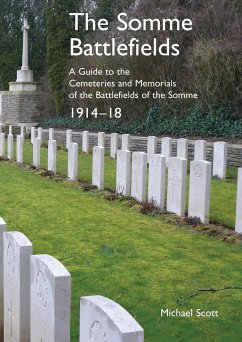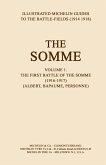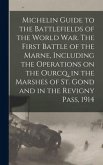A war that ended in 1918 and in which the men who fought are now dead is today of great historical interest for many British people. The Centenary Celebrations have brought a renewed level of interest in a conflict that is still 'touchable' in that almost all of us know someone at one or two, or even three, generations distance from us. We feel they are our family though time has brought separation. When we make our journeys to the battlefields, we take part in a pilgrimage of sorts, one that remembers those who took part in the battles, the day to day trudge of existence, the familial brotherhood of survival, the occasional laughter and pleasure of simple things, but also honours those who will not get to do what we do, which is return to our families and live our lives to a hopefully old and fulfilled age. Each year I lead groups to the battlefields of World War One. In trying to provide these groups with as much insight as well as information. But always the question to be answered as we stop at, or more often pass, a cemetery is "Why is this cemetery here?", then of course "Who is buried here?". It was important to me to be able to have answers that showed that every cemetery, and every headstone, (or name on a memorial) has a story. It is easy, especially in somewhere like Serre Road No. 2 Cemetery, to forget that every grave is a life lived, with relatives, experiences and aspirations. This book aims to tell some of the stories, while only scratching the surface. But, importantly, every burial, and every cemetery no matter how isolated or small, call tell us something of our social history. Defining the area to be covered by the book is a personal decision and quite arbitrary. First, I decided what is the battlefield of the Somme? That means to me 1916 and 1918. Consequently, a much larger area that may be considered the 'Battle of the Somme', which is often only the area involved on 1 July 1916. But in wanting to include the battlefields of 1916 and 1918 I had also to include areas involved in the Retreat to the Hindenburg Line and parts of the Battles of Arras and Cambrai, all in 1917. I know that men who were involved in the battles, and died of a result of their wounds, are not here. Some died months later in Britain. I took one family to follow the footsteps of a relative wounded at Luke Copse near Serre on 1 July 1916 who died of his wounds five days late at a Base Hospital in Rouen and is buried in St Sever Cemetery. I had to draw lines somewhere and I am satisfied that my boundaries allowed me to validly cover as much of the battlefields of the Somme as made sense.
Hinweis: Dieser Artikel kann nur an eine deutsche Lieferadresse ausgeliefert werden.
Hinweis: Dieser Artikel kann nur an eine deutsche Lieferadresse ausgeliefert werden.









